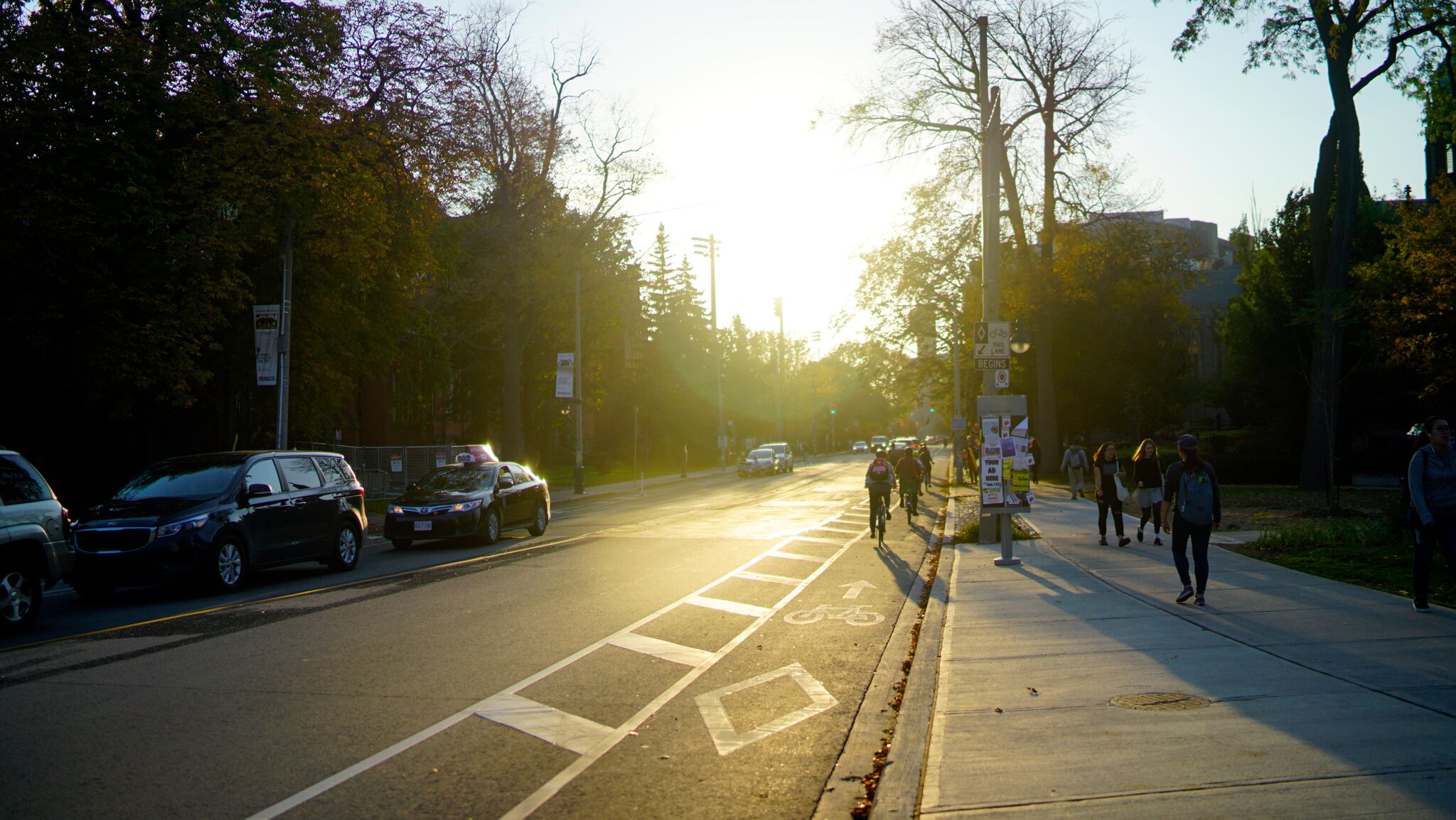Why and how you should bike in Toronto
If you’re coming to Toronto for the first time, you might be a little stressed out by how vast it can seem – once you step off campus, the city goes on for ages in every direction, and navigating that can be a little daunting. If you’re living in residence, you might want to branch out and see the city; yet you may also be unsure as to how to really do that. You might have classes back to back at opposite corners of campus, or you might be living off campus and in need of a speedy way to get to a 10 a.m. class. If you want to get around town effectively and actively, there’s no better way than biking. Here’s why:
- It’s faster – because of traffic downtown, it’s more often than not way faster to ride a bike than it is to take the bus or streetcar, and obviously way quicker than walking too! At certain times of day, a 5 minute bike ride could take 20 minutes on the TTC. On a bike, you have way more control over how long your trip will take, and it’s way better when you’re rushing.
- It’s cheaper – TTC costs add up, especially if you’re taking it regularly. A bike is a two-time expense: you buy your bike, and you buy a good lock, and you’re set. In the long haul, you’re saving money by biking versus taking transit.
- It’s carbon-neutral – public transit is way better than driving for CO2 emissions and is still a great option for reducing pollution, but there’s nothing better than having a completely pollution free commute.
- It’s fun – nothing beats the feeling of biking to class on a nice day. Why should your commute be a chore when it can be one of the better parts of your morning?
So there’s why you should do it, but how you do it is just as important. Straight up, biking in Toronto is dangerous and not for the faint of heart. Back in June, a woman was struck and killed while biking at the corner of Bloor and St. George St, just a few hundred metres from Innis. For every fatality, there are loads of non-fatal collisions. Toronto has got great cycling infrastructure compared to most cities – loads of bike lanes, separated and unseparated, and a really strong and growing culture of commuting by bike – but there’s still a lot of risks involved in cycling in the city. There are risks involved, but biking in Toronto is absolutely worth it if you take the precautions to protect yourself.
Here’s how:
- Wear a helmet – holy mother of God, wear a helmet. Toronto’s laws don’t require you to, but just do it. If you ever have a crash or collision, you’ll be glad you did.
- When you can, stay on streets with bike lanes – Toronto’s bike lane network is far from perfect, but the bike lanes the city has added over the past few years have made lots of streets a whole lot safer. More specifically, if you can, stay on the quieter streets which have bike lanes. Use the Harbord/Wellesley bike lanes instead of Bloor or College if you’re going east or west from campus. For good north-south bike lanes, you have to go a bit farther wide, but Shaw and Sherbourne have good ones.
- Always be watching your surroundings – cars are unpredictable anywhere, but Toronto drivers are specifically so. When you’re biking, keep an eye on where cars are.
- Be ready for anything – if you have a bad feeling about a car near you, slow down and prepare yourself just in case. Often you can tell which cars are gonna fling their doors open or turn suddenly. You can avoid lots of potential collisions like that, and, in situations where you can’t fully prevent the collision from happening, you can minimize the damage to yourself. Good reflexes are crucial, be ready to brake abruptly if need be.
- Take good care of your bike – having working brakes is so important, as is having a vehicle that’s easily manoeuvrable. It’s way easier to avoid a dangerous situation in a pinch if your bike is in good condition and can do what you need it to. There are lots of great resources on campus for regular upkeep – take advantage of them.
- Be confident – this is the most important one. Drivers in this city don’t understand how to drive when bikes are nearby, and many get nervous when bikes are near them. Be self-assured in your actions and do them with determination and purpose; a bad situation is far more likely to happen if you’re hesitant or jittery. Know that you are capable and be clear with your movements.
Toronto has a long way to go to be a perfect biking city, but cycling is a great way to get around town if you know how to do it safely. Approach your commute with caution and care but have faith in yourself that you know what you’re doing. Have fun and always wear a helmet!
